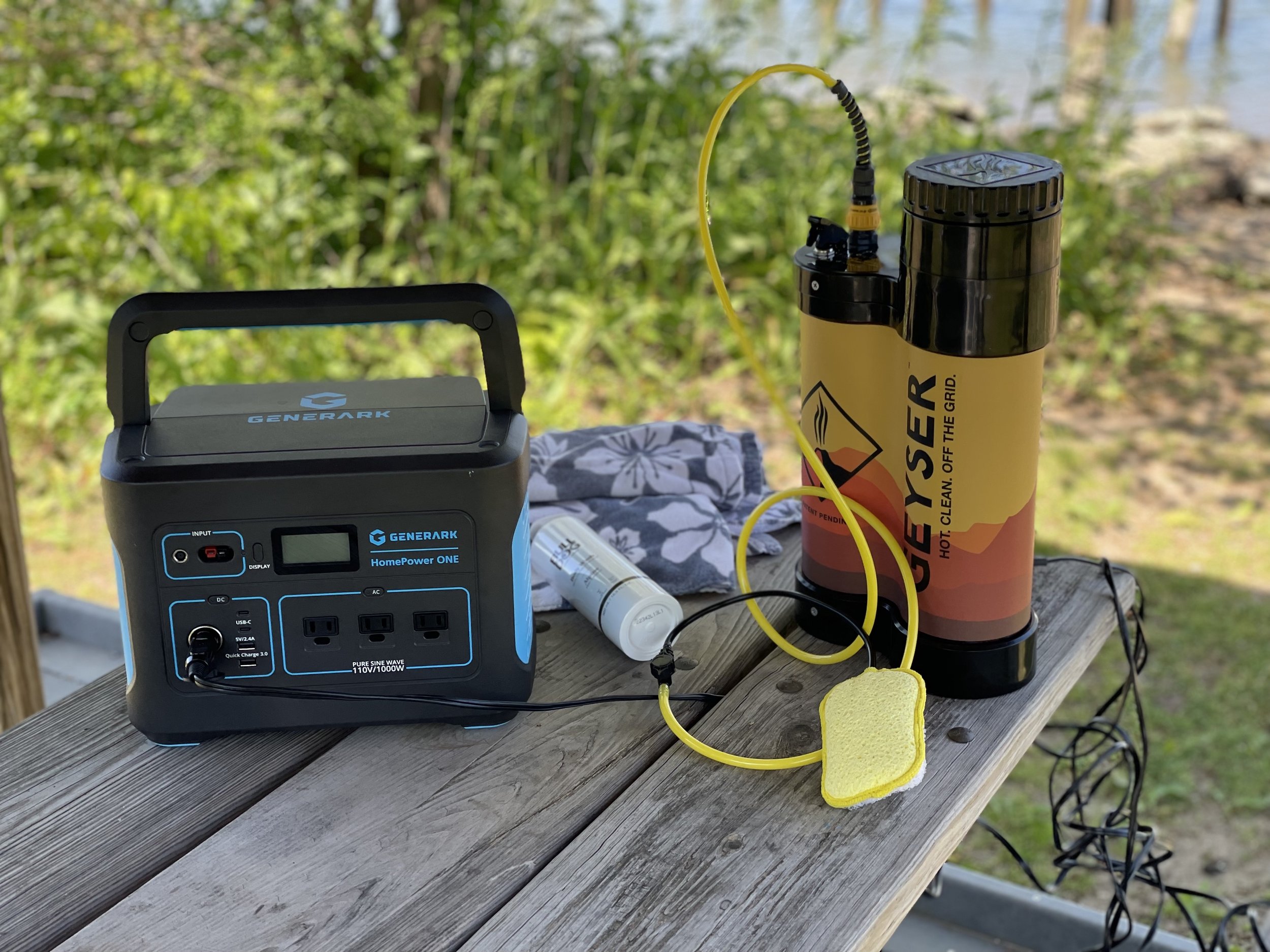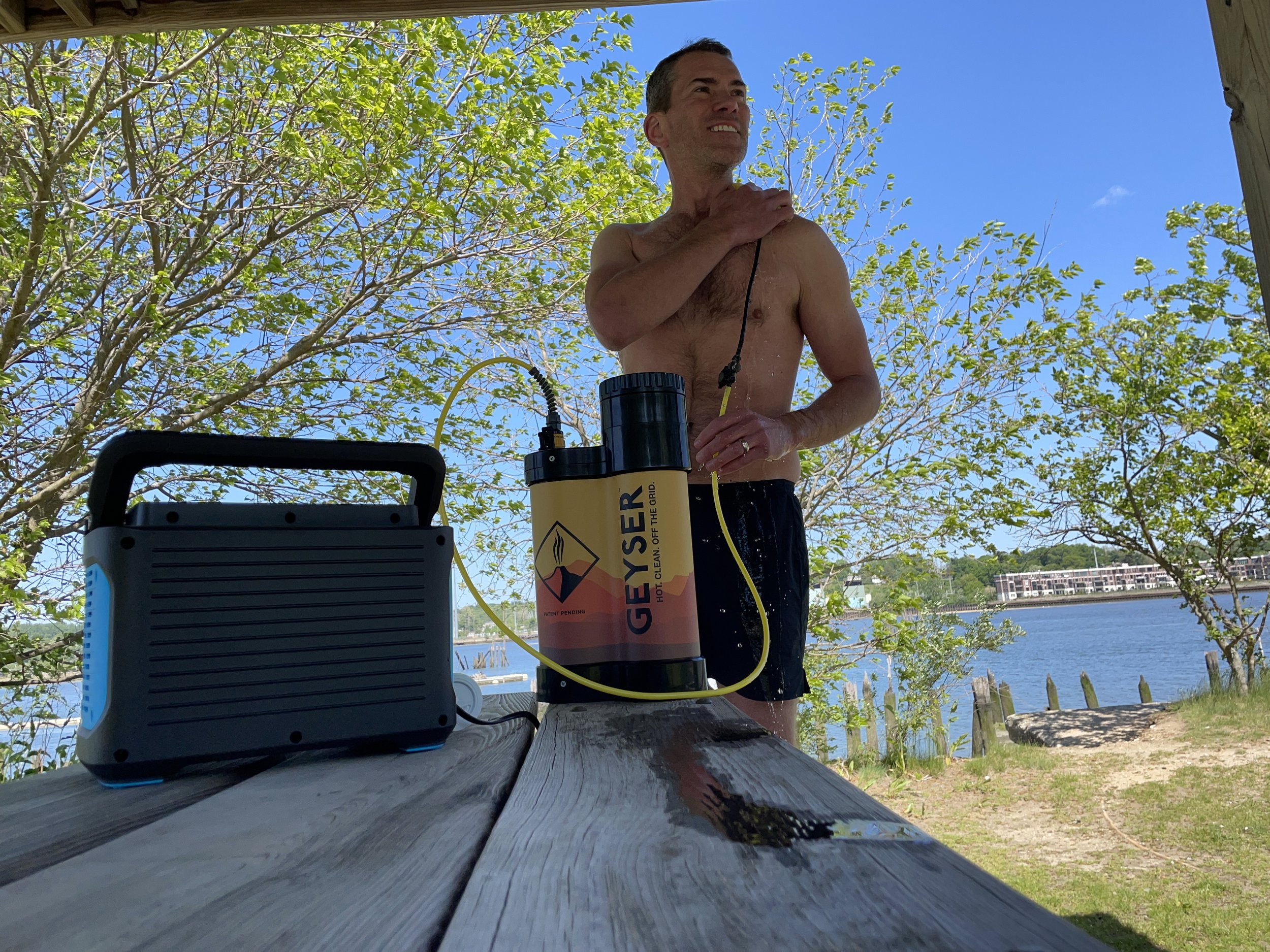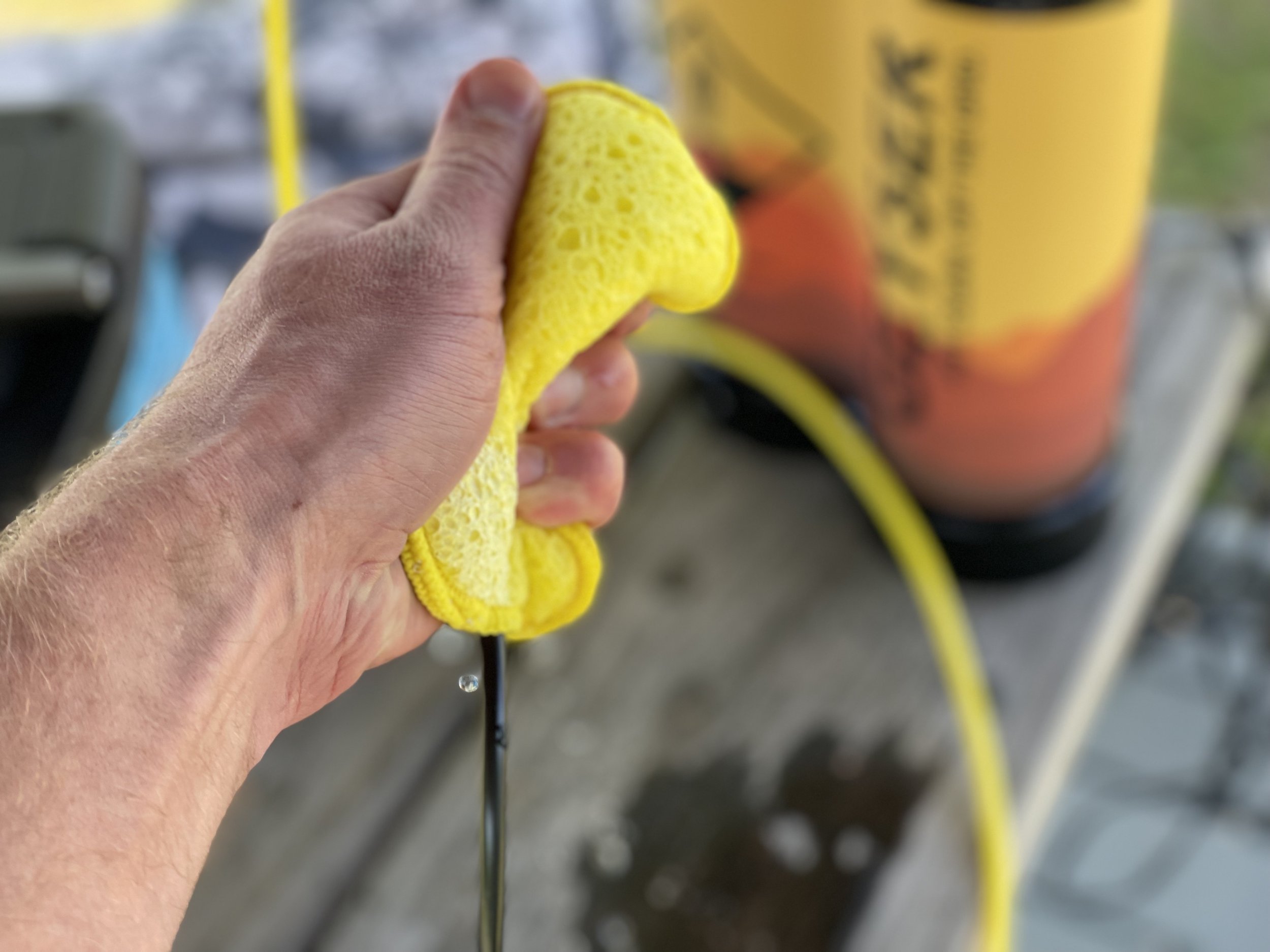
An Off-the-Grid Hot Shower using less Than a Gallon of Water
geyser systems
When you’re hiking, climbing, mountain biking, or doing so many other wonderful things out there, you get dirty. When the day’s adventure ends back home — or back at the hotel or the cabin or such — that’s no problem; you just hop in the shower and wash away all the dirt, sap, sweat, blood, and whatever else befouls you.
But when your outdoor fun ends back at the campsite or the van, you face one of the largest pain points we outdoor enthusiast types face: the camp shower. The problem? Most camp showers, well, suck. I know, because I’ve tried quite a few of them over the past 20-odd years.
There are two major issues with most camp showers on the market. The first is that they are gravity fed, and finding a way to secure a shower high enough overhead so that you don’t have to awkwardly squat and squirm is actually pretty tricky. Second, getting the water in your camp shower to a reliably comfortable temperature requires an equal mix of luck and sorcery, especially when it’s one of the solar camp showers you heat up over the course of the day.
In short: The Geyser Systems Portable shower is the best camping shower I have ever used because it totally removes those two issues. This a powered unit that pumps water out at a flow level you set, no gravity required. Second, it’s incredibly easy to get water at a perfect warmth from a Geyser shower, and that’s true even if you opt for the less expensive version without a built-in heater.
Specs:
Weight: 7.8 lbs. (8 lbs. for heated Geyser)
Dimensions: 16” x 9” x 6”
Capacity: 3 liters
Highlights:
Creates a constant, controllable stream of water without gravity feeding required
Easy to get water temperature where you want it
Uses less than a gallon of water to clean an adult head to toe
Can also be used to clean gear or apparel
For the Record:
Pricey, as even the non-heated Geyser costs $280
Requires a power source



Of all the additions to my camping kit, the Geyser might have been the biggest game changer. Why? Because I usually go camping with my family, and I don’t know about you, but I love anything that removes a cause for complaint from the kids. (OK, and I love a nice, hot shower myself, too, even if I have always been able to keep my own grumbling quiet when shivering under a tepid stream from other camp showers.)
Here’s the 4-1-1 on how a Geyser shower works: it’s got a three-liter water reservoir, a pump, a tube with a regulating dial on it, and a sponge into which the tube feeds at the end. With the shower powered on, as soon as you twist that dial, water begins flowing into and through the sponge. And this is warm water, mind you — we’ll get to that in a moment.
You run the sponge all over yourself, over and through your hair, up and down your arms, chest, you know all about a body, so that’s enough of that. Then you briefly shut the shower off as you lather up. Get the water running again and you will have more than enough water left in the tank to rinse shampoo out of even the longest of locks and to make two passes over all that skin of yours, rinsing away every last bit of dirt, soap, and whatnot.
I say that with confidence because every time I have used my Geyser Systems shower, there has been at least an inch of water still in the reservoir. (Now, if you turn the water flow up to full blast, that may not be the case, but that’s overkill anyway.)
A Hot Shower, Quick and Easy
Geyser Systems’ Portable Showers come in two varieties, one with a built-in heater, the other without. It’s pretty easy to understand how the heated version works: you flip it to heating mode and wait until an indicator light pops on, then you enjoy your hot shower.
That’s great and all, but I’d argue that the more basic (and cheaper) Geyser shower is actually the cleverer unit. That’s because its designers built the hardware’s reservoir to work perfectly with one of the other staples of camping (or van life), the camp stove.
A Geyser’s reservoir perfectly accommodates three liters of water, and when you fill it with two liters of tepid water and one liter of boiling water, the resulting temperature is just perfect for a nice, warm shower. Like it cooler? Easy, add less hot water. Want it hotter? Yeah, you already figured it out.
And yes, you can use the cool and boiling water blend in the heated Geyser, too. Which is good, as it can take quite a while to get warm, frankly.
Using a Geyser Shower
OK, so we talked about the heating, what with the flip-of-a-switch option and the boiling water on the camp stove of it all. But let’s get a bit more granular, here.
Regardless of which Geyser shower you have, you need to have power to run it. That power can be your vehicle’s battery, an AC outlet, or, like I always do, a portable battery power bank like an EcoFlow or a Geneverse.
You fill the reservoir, connect the power cables, stick the sponge on the end of the tube, and you’re ready to go. The secret is not to go too far when turning the dial that starts the flow of water. I find opening things up about halfway gives me plenty of water to soak down and then rinse up, as it were. If you need extra flow to clean thick hair (or rinse a wound), then let it rip at full blast for a bit, have fun with it.
One of the other great things about a Geyser Systems shower is that it’s not a mere shower at all, it’s an all-purpose cleaning device. When we’re not using it for bathing, we switch out our Geyser’s sponge and use a different one to clean the pots, pans, and dishes after meals. I have used it to rinse down dirty boots, tent spikes, trekking poles, and more, and as the company offers sponges in different colors, it’s easy to keep things separate.
Long Story Short…
If you can swing the price of a Geyser Systems Portable Shower right now, if you have the space for it in with the rest of your kit, and if you have a reliable source of power when you camp, then you should by all means consider getting one of these showers.
A Geyser shower stands out in terms of innovation and function: it simply works better than other camp shower options because of its informed design an ease of use. And unless you simply don’t bathe when you camp (no judgment), you really can turn a camping pain point into a pleasant experience with one on hand.

